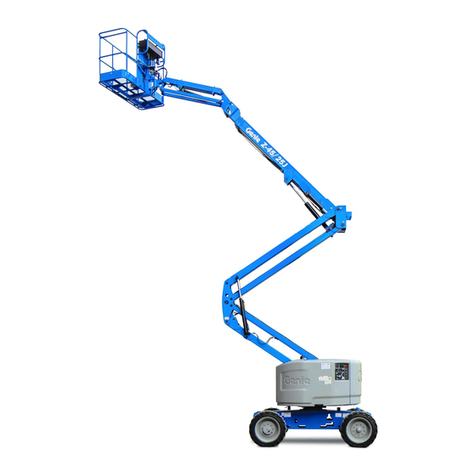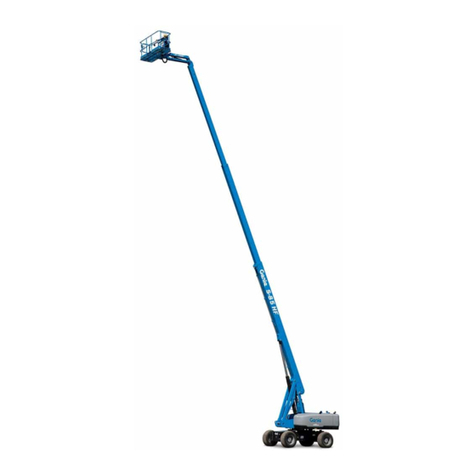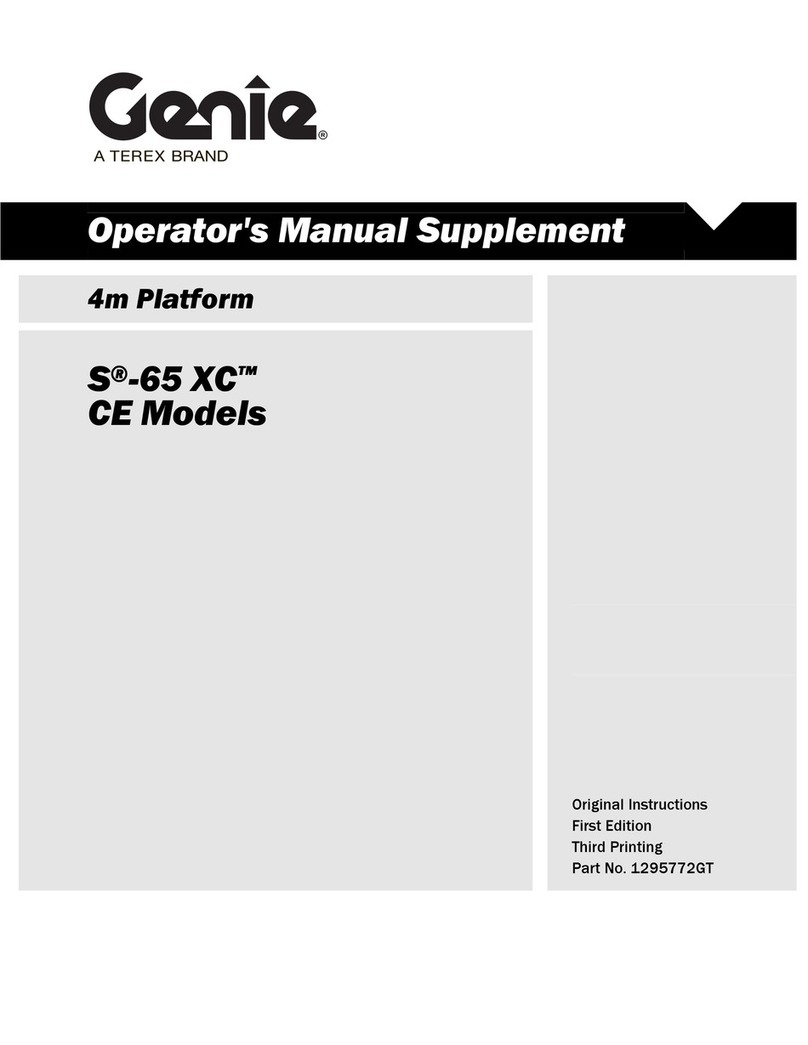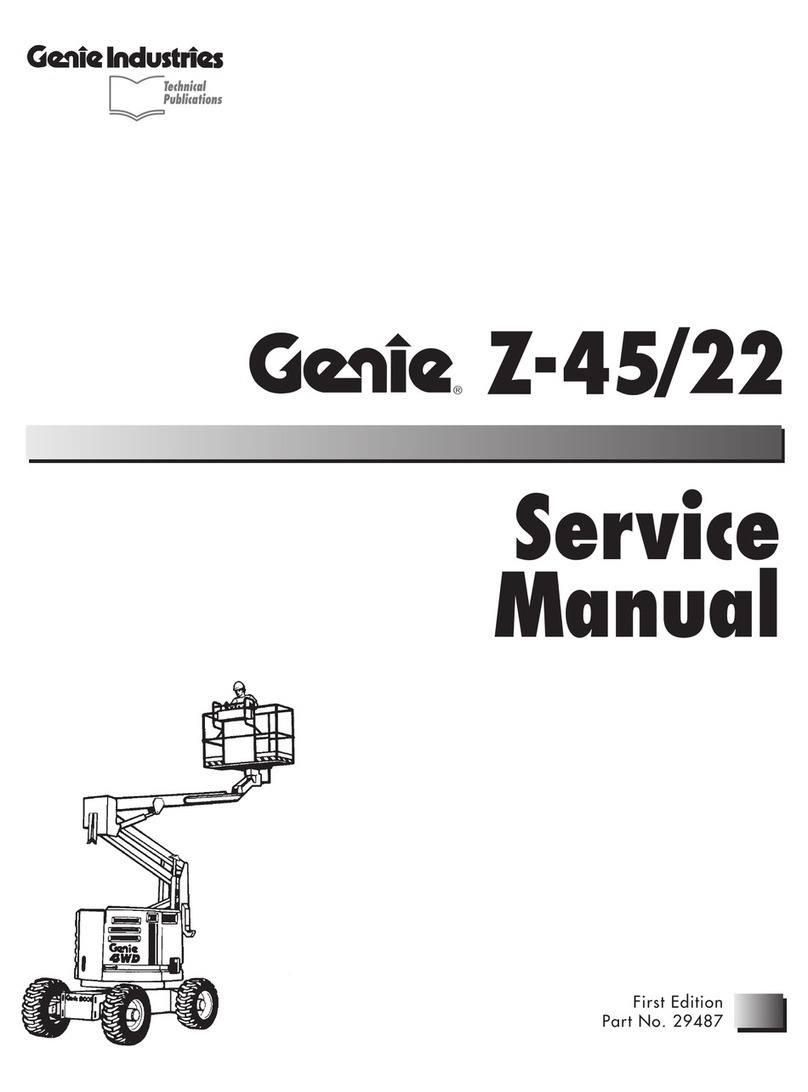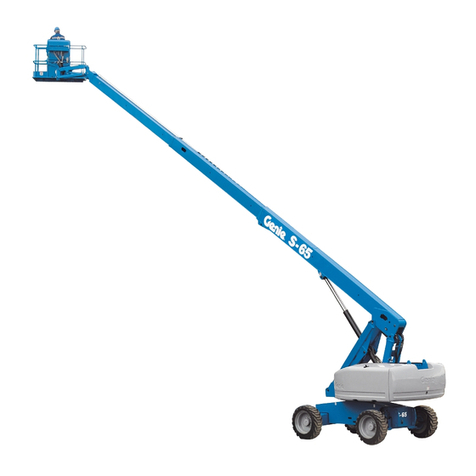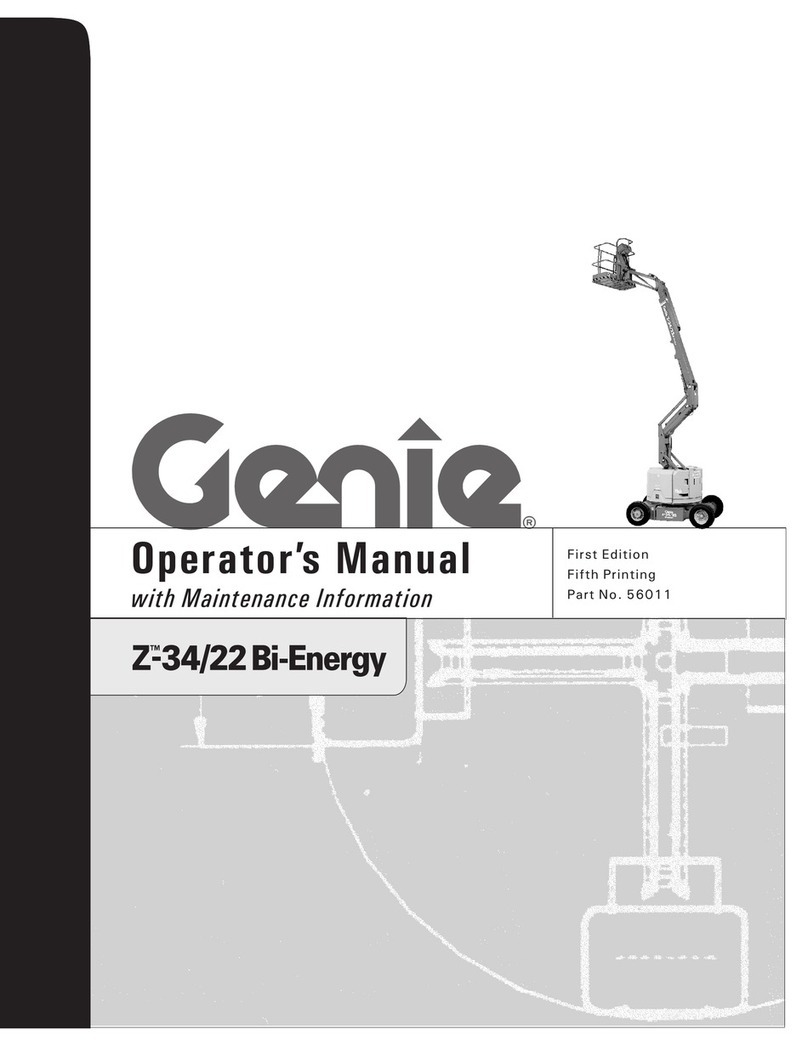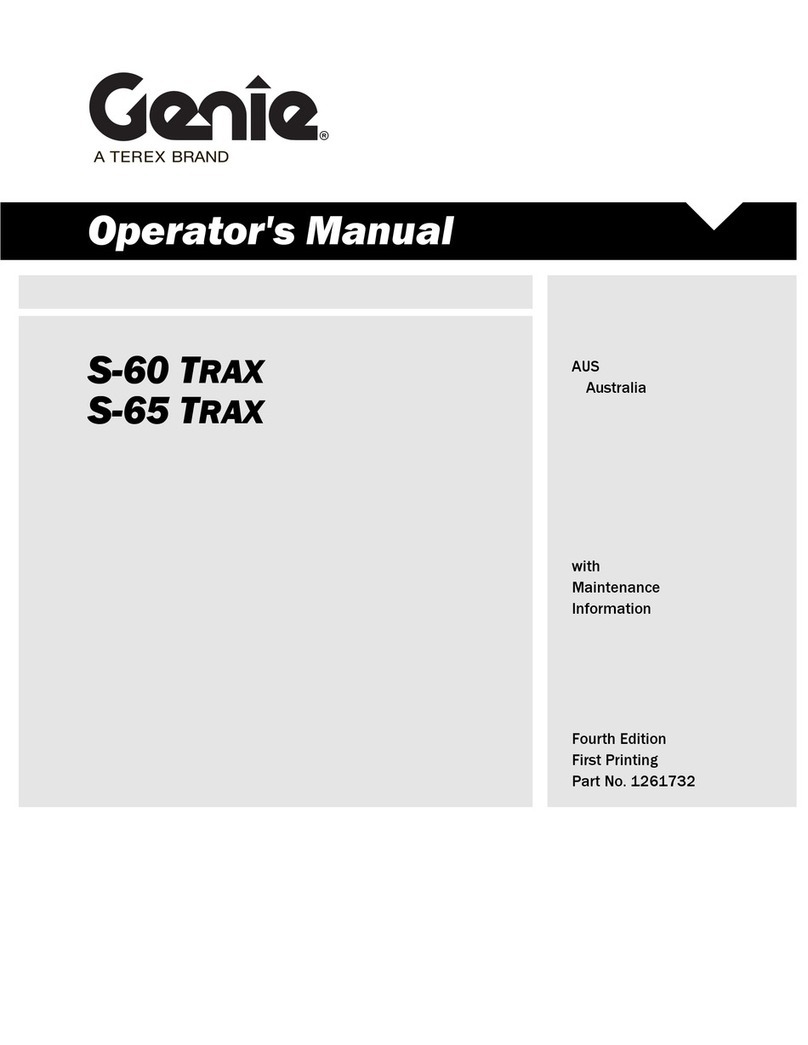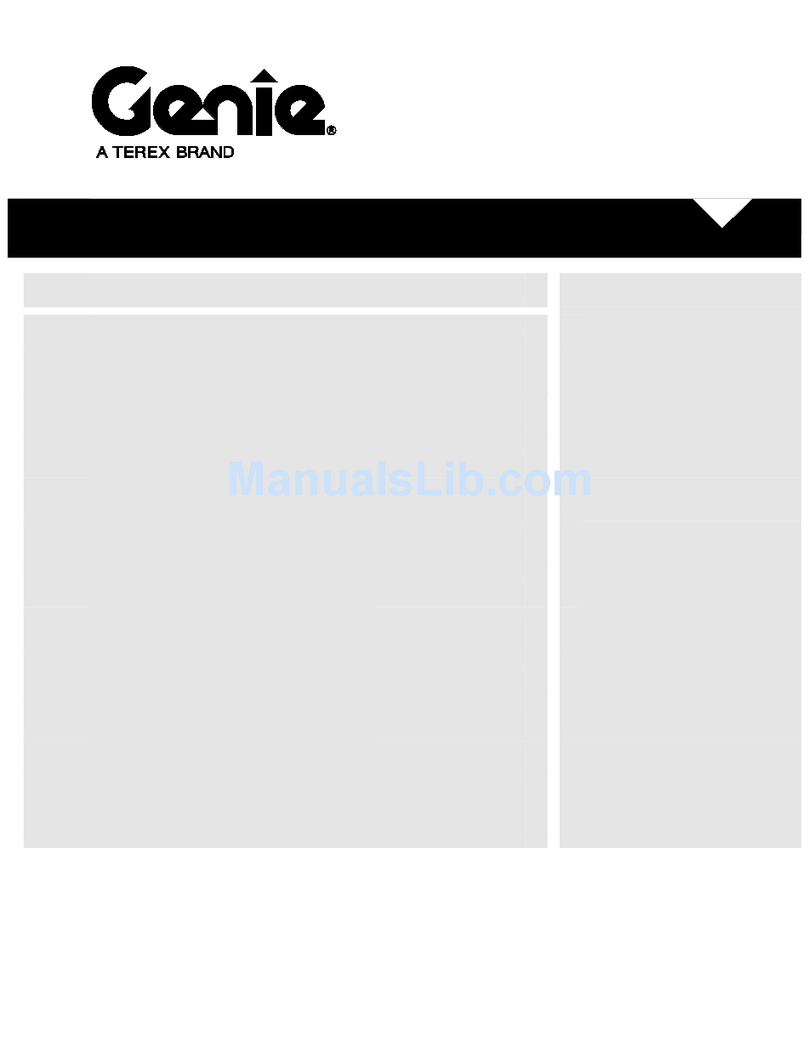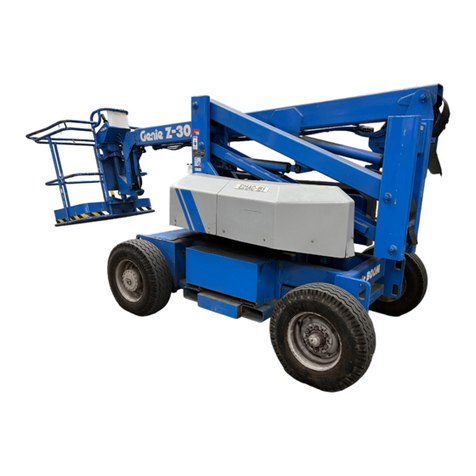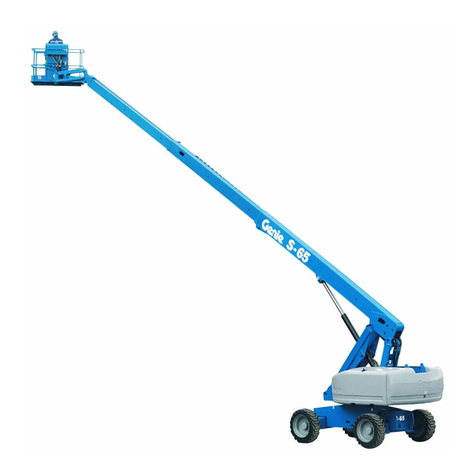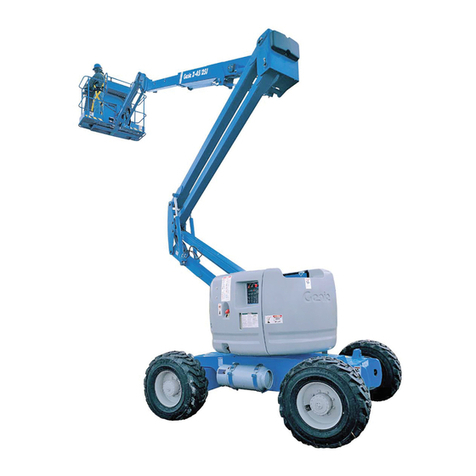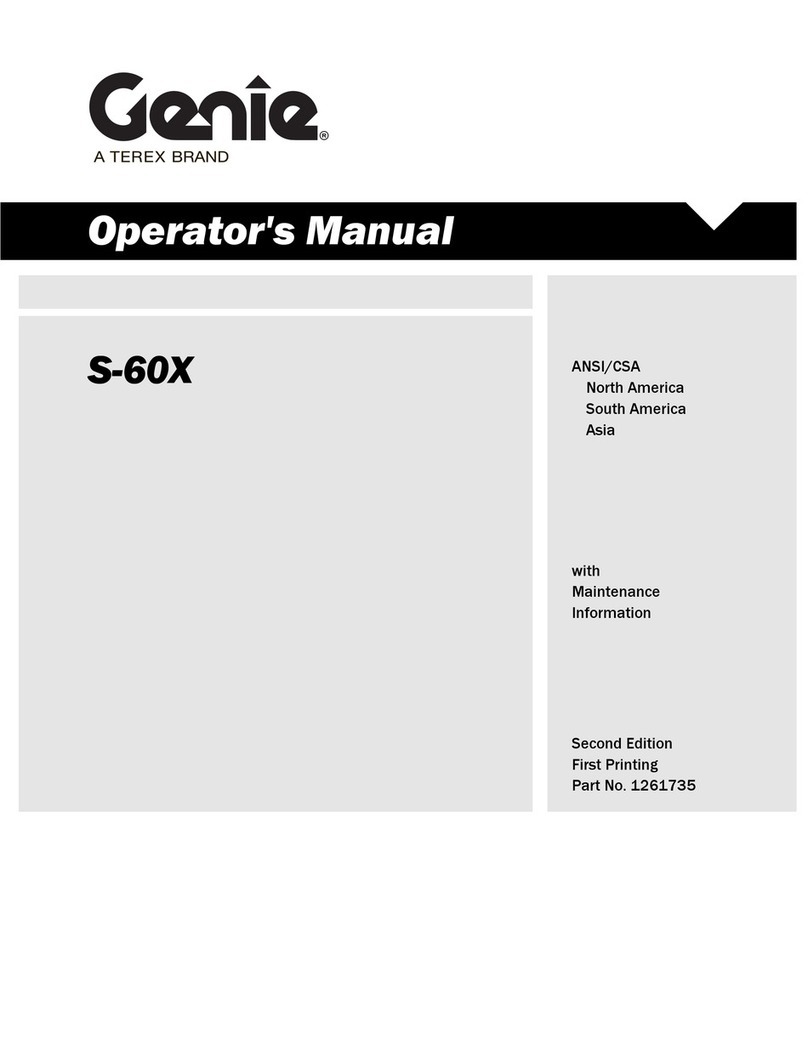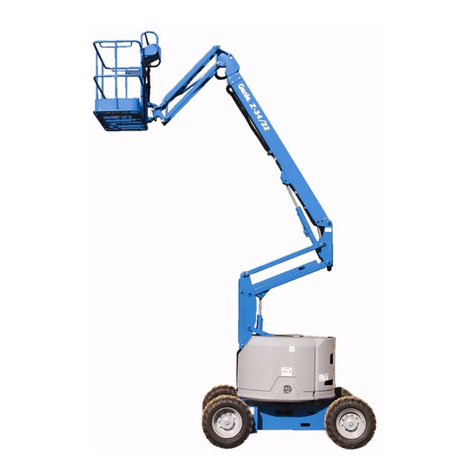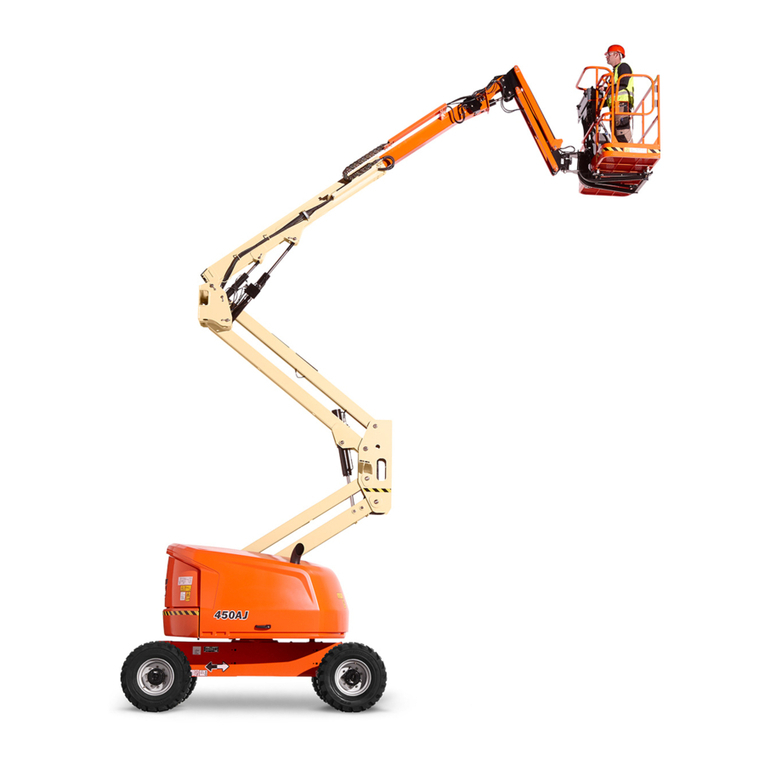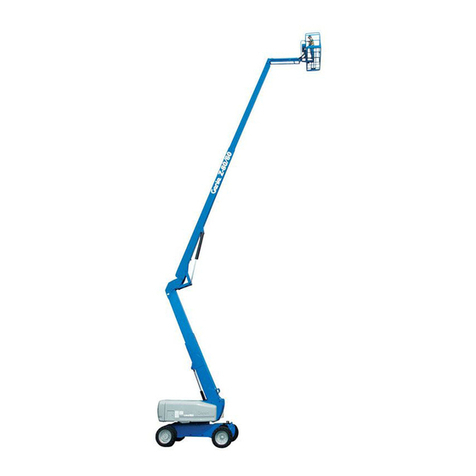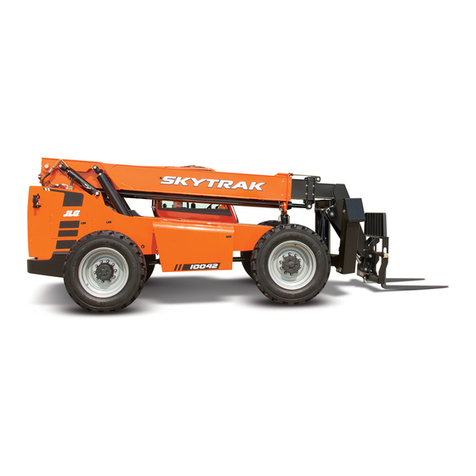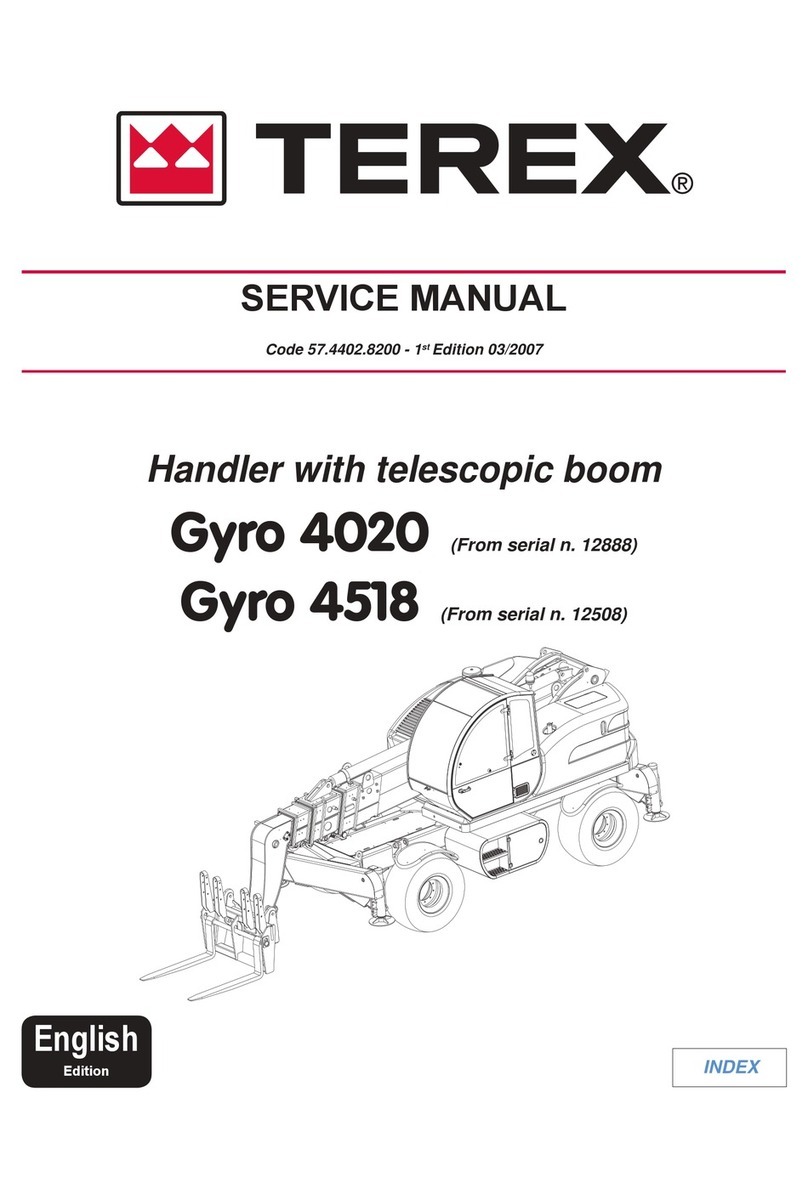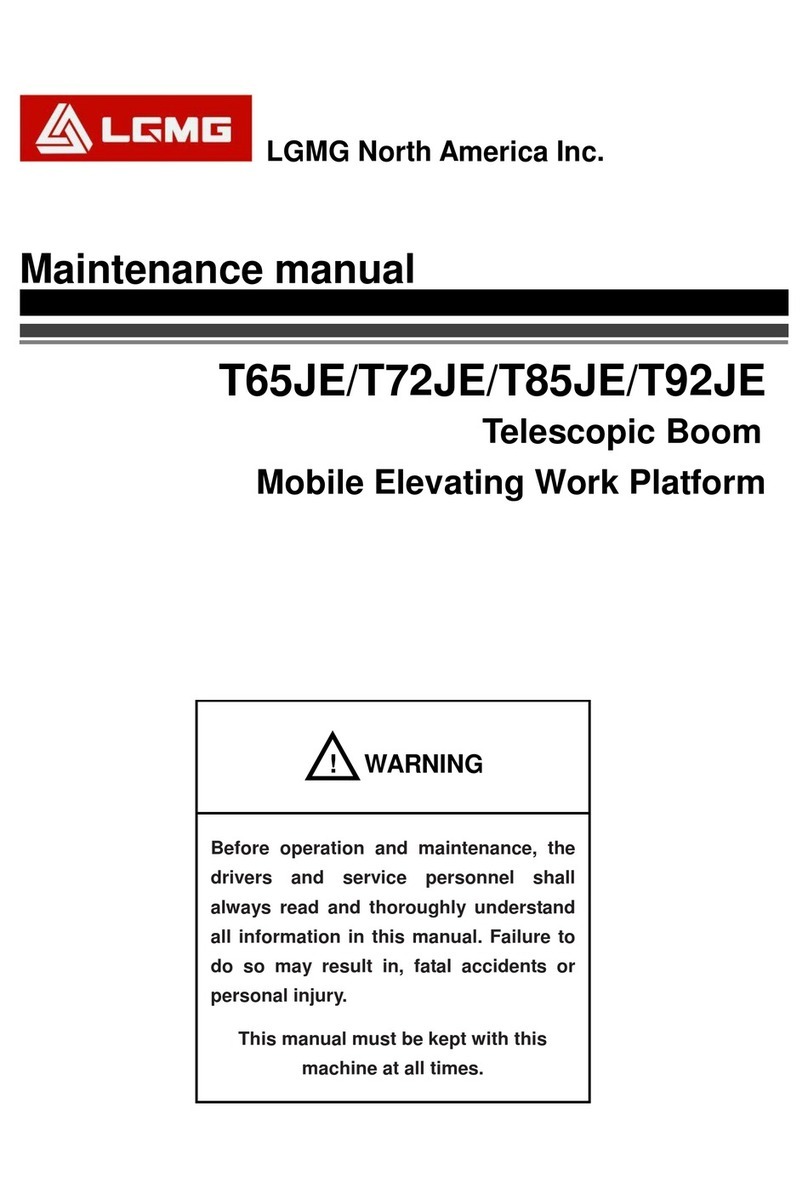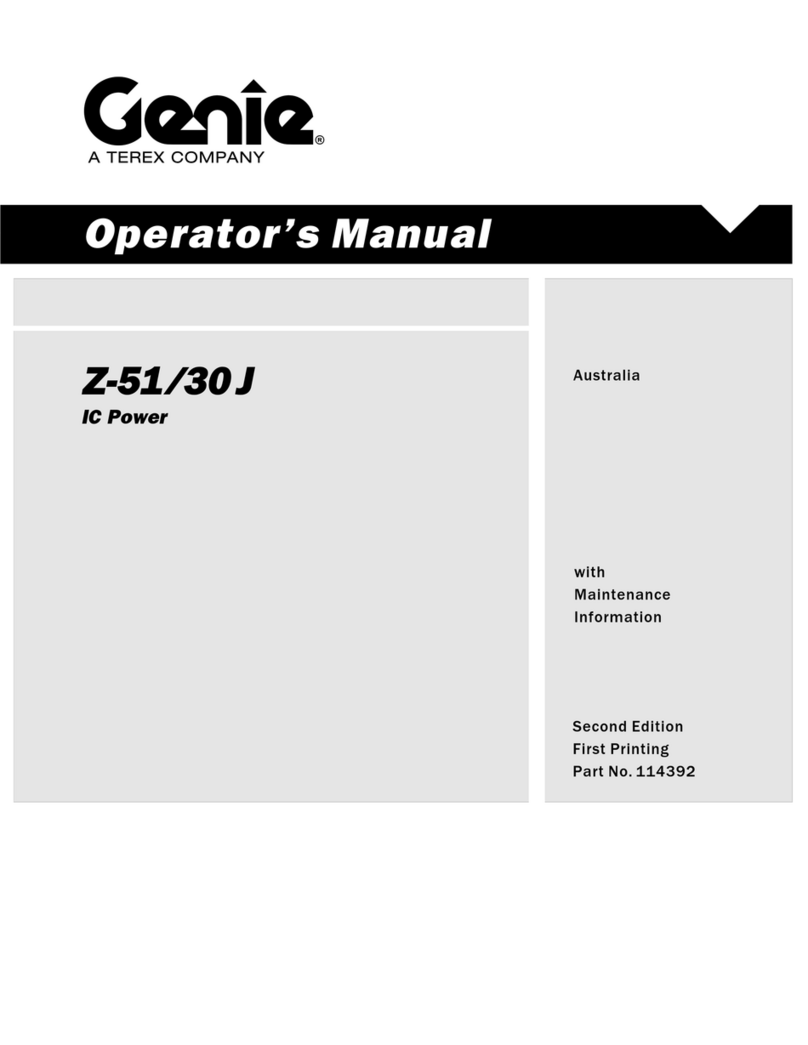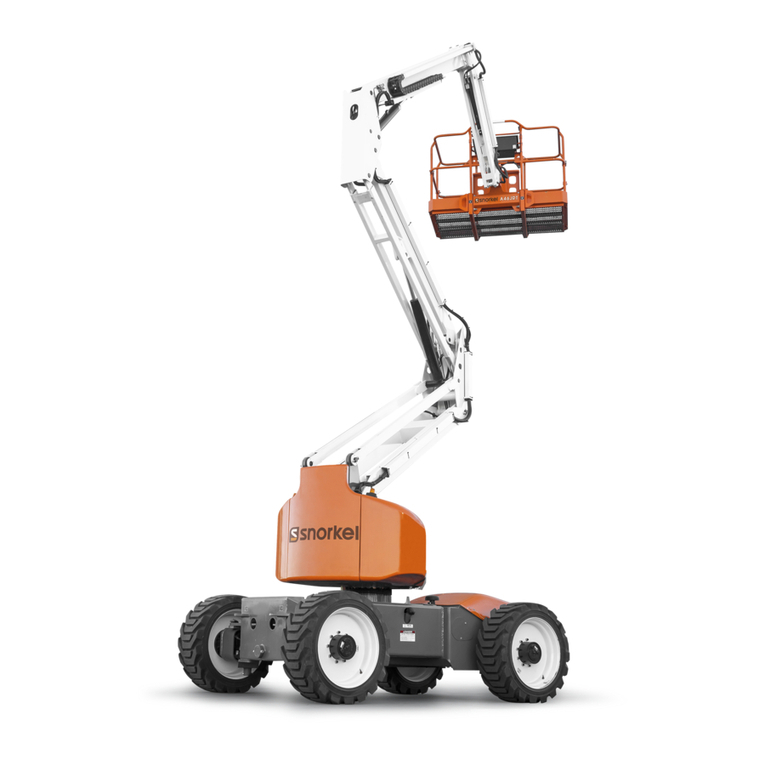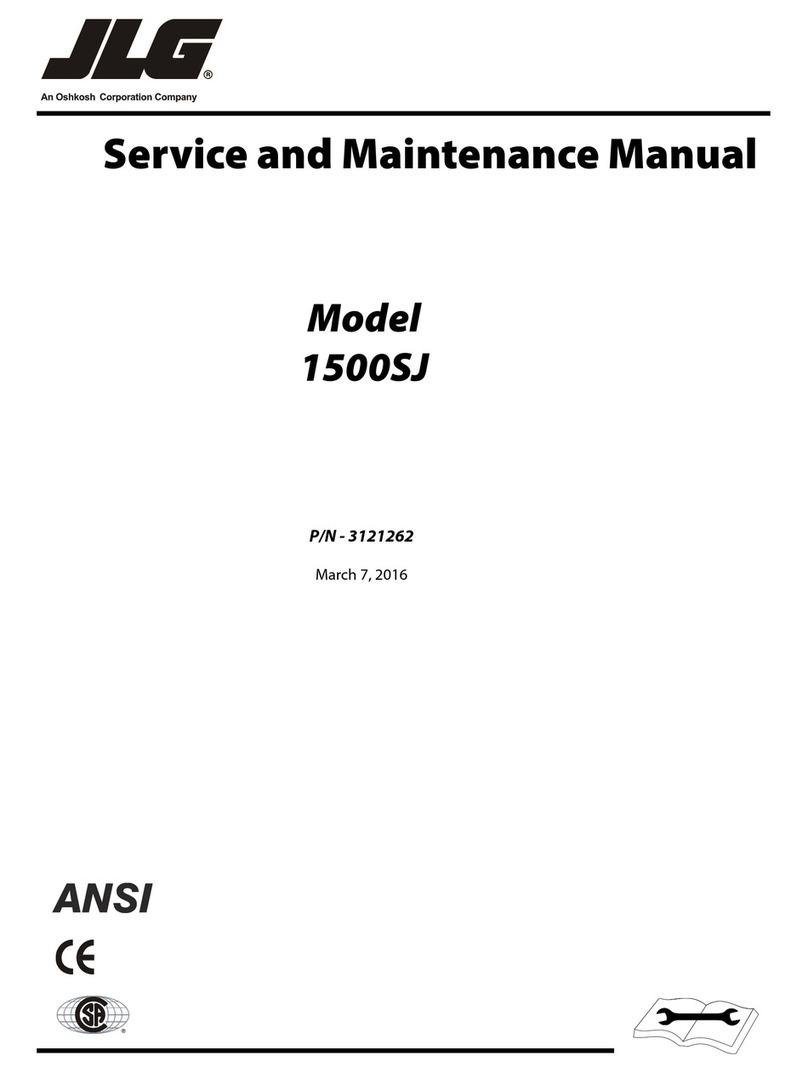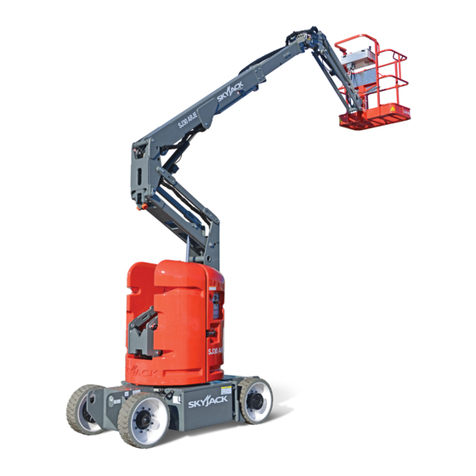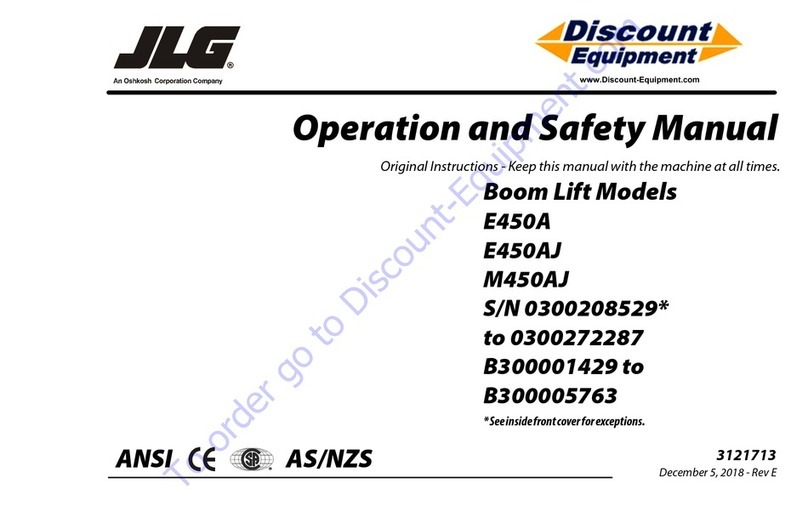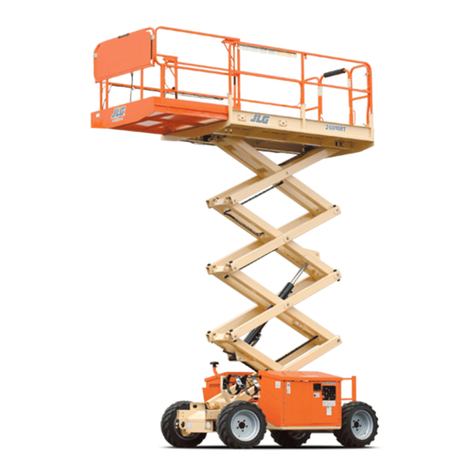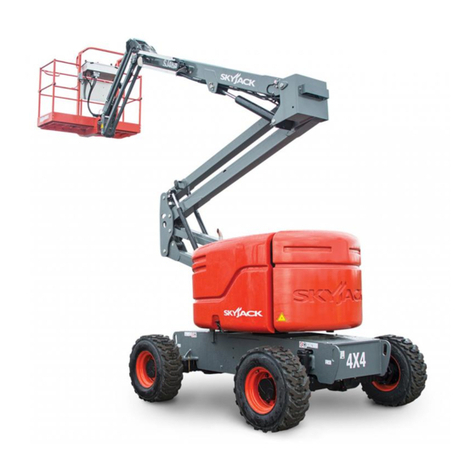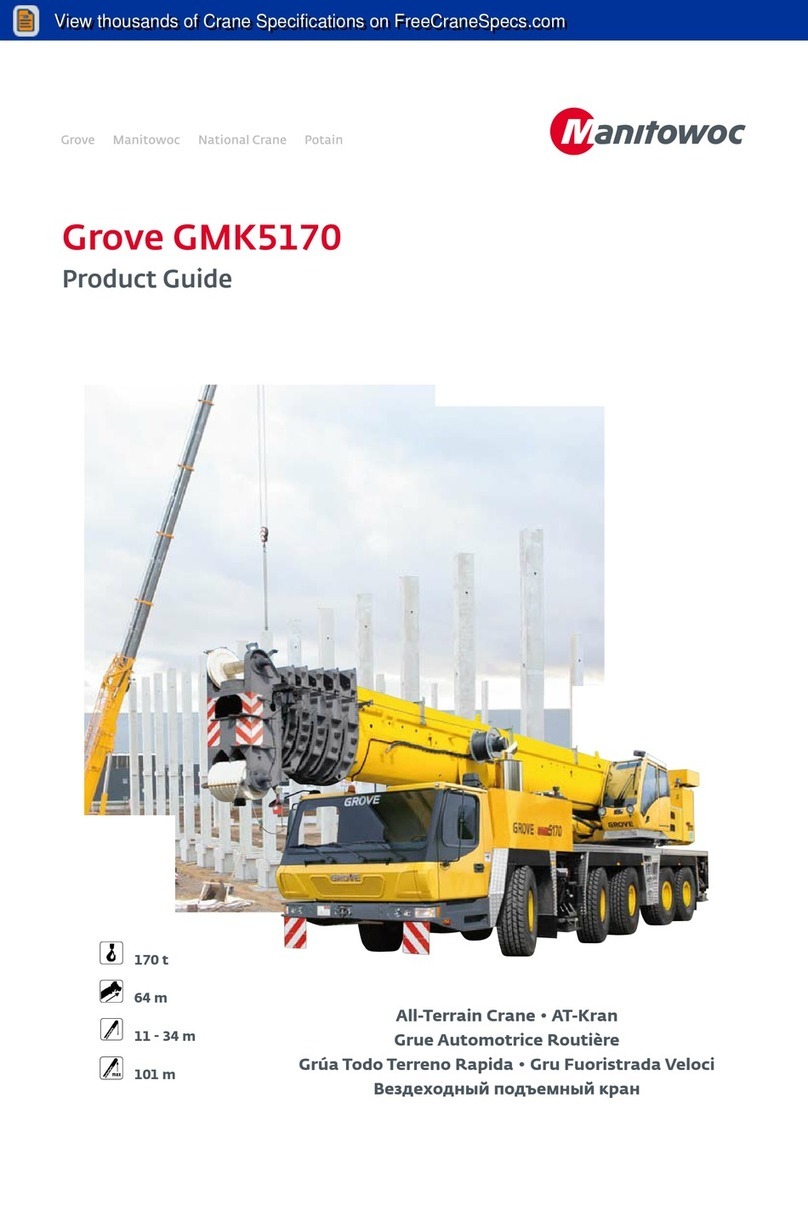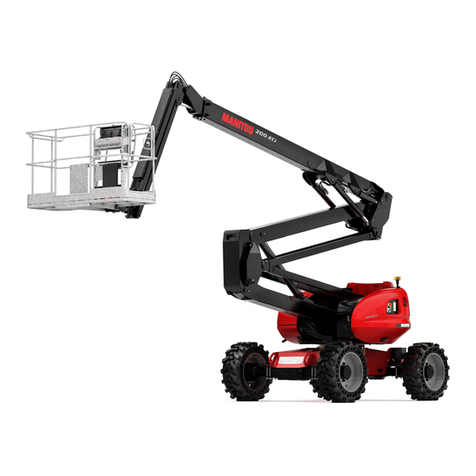
2 Genie TZ-34/20 Part No. 133554
Operator’s Manual Fourth Edition • Fourth Printing
Contacting the Manuafacturer
At times it may be necessary to contact Terex.
When you do, be ready to supply the model
number and serial number of your machine,
along with your name and contact information. At
minimum, Terex should be contacted for:
Accident reporting
Questions regarding product applications and
safety
Standards and regulatory compliance information
Current owner updates, such as changes in
machine ownership or changes in your contact
information. See Transfer of Ownership, below.
Transfer of Machine Ownership
Taking a few minutes to update owner information
will ensure that you receive important safety,
maintenance and operating information that
applies to your machine.
Please register your machine by visiting us on the
web at www.genielift.com or by calling us toll free
at 1-800-536-1800.
Danger
Failure to obey the instructions and
safety rules in this manual will result
in death or serious injury.
Do Not Operate Unless:
You learn and practice the principles of safe
machine operation contained in this operator’s
manual.
1 Avoid hazardous situations.
Know and understand the safety rules
before going on to the next section.
2 Always perform a pre-operation inspection.
3 Always perform function tests prior to use.
4 Inspect the workplace.
5 Only use the machine as it was intended.
You read, understand and obey the
manufacturer’s instructions and safety rules—
safety and operator’s manuals and machine
decals.
You read, understand and obey employer’s
safety rules and worksite regulations.
You read, understand and obey all applicable
governmental regulations.
You are properly trained to safely operate the
machine.
Introduction

